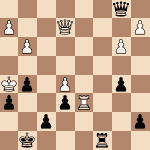This “How to teach chess” article (part four) and the previous article (part three) are for chess players who already know the basics or for those who are teaching intermediate or advanced players. That is, part three and part four are for you to move beyond the basics. Or, if you are a chess teacher, for you to help others progress beyond the basics. The basics include how the chessmen move (including special rules such as castling and en passant) and the easier endgame checkmates, such as king and two rooks versus king. If you are teaching a beginner or mixed group, cover that basic material by following “How to teach chess (part one)” and “How to teach chess (part two).”
As I wrote in “How to teach chess (part three),” I taught chess at Coppell Gifted Association’s MOSAIC from July 23-27. My 9:00-10:30 a.m. “Chess-Advanced” class in July was composed of 10 students who previously had me as an instructor or who had a chess rating from the US Chess Federation. In this article (part four) and in my previous article (part three, which covered Monday, July 23 and Tuesday, July 24), I outline my lessons for these more advanced students. You can use these articles as a self-study guide (for improving your own chess). Or, if you are a chess teacher, you might try my outlined plans with your advanced students.
Wednesday, July 25
Although I had hoped to start round 2 of the advanced tournament Tuesday, the tactics worksheet took too long to complete. So I began Wednesday with round 2. As students completed games, they analyzed those notated games with each other. They individually completed “Pin ‘em & Skewer ‘em!” worksheets from ChessKid.com. Because advanced students wanted five rounds, which was my original plan too of one round per day (Monday through Friday), students began round 3 near the end of Wednesday’s class.
Thursday, July 26
I taught how to draw with king against king and pawn, in the same way I wrote about that ending in this article. I told students that this drawn ending relates to the Philidor’s position. As students finished round 3, and completed their post mortems of those third round games, I asked them to figure out how to draw the Philidor’s position. No students figured out the drawing technique. One way the defending side can draw is to trade rooks (at the right moment) and achieve a drawn king versus king and pawn ending. I showed the various ways the defending side can draw the Philidor’s position on the demonstration board. Then we began round 4.
Friday, July 27
Students completed round 4 then tried to force a win for the stronger side in the Lucena position. Unlike the Philidor’s position, where the defending king blocks the stronger side’s pawn, in the Lucena position the defending king is not stopping that pawn from promoting. Mostly for that reason, the Lucena position is a win for the stronger side. One pair of students figured out a way to promote, though not the elegant “build-a-bridge” method demonstrated by Lucena. I showed Lucena’s solution and then students played round 5.
In between rounds 4 and 5, students completed a worksheet on the Ruy Lopez, Exchange Variation. Since this opening is one of my favorites, and could become part of your repertoire or your students’ repertoires, here is some information about the Ruy Lopez, Exchange Variation, adapted from my book Read, Write, Checkmate: Enrich Literary With Chess Activities.
Ruy Lopez, Exchange Variation
You can download the Ruy Lopez Exchange Variation and play it in SparkChess Premium (or any PGN player) or you see how it plays below:
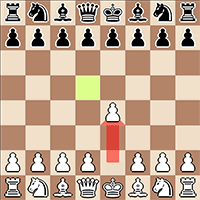 | This move controls the central square d5. The center consists of the squares e4, d4, e5, and d5. This move also allows the bishop on f1 and the queen on d1 to develop. |
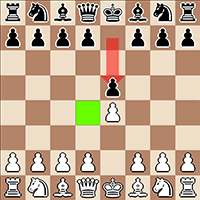 | Black controls the central square d4. The bishop on f8 and the queen can now develop. |
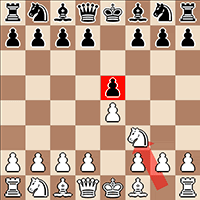 | White attacks the black pawn on e5. |
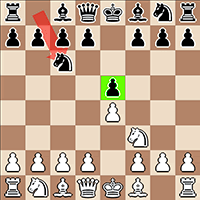 | Black defends the e5-pawn. |
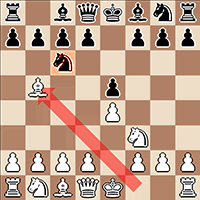 | White attacks the black knight which is defending the black pawn on e5. |
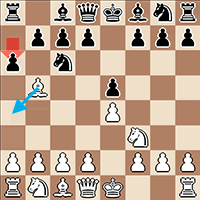 | Black attacks the white bishop on b5. The Open Ruy Lopez continues with 4. Ba4 and is the most common reaction here. |
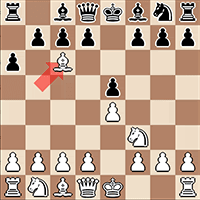 | 4. Bxc6.(4… bxc6 5. O-O and White has an advantage. ) |
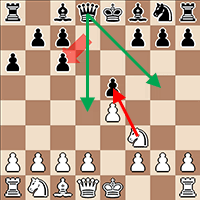 | 4... dxc6.(If 5. Nxe5 do you see two forks for Black that win back the e-pawn? The answers are 5…Qd4 and 5…Qg5. Assuming 5…Qd4 leads to 6. Nf3 Qxe4+ and Black has the advantage. ) |
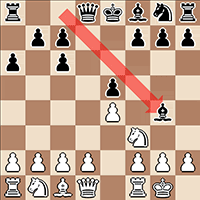 | 5. O-O Bg4.Black pins the white knight on f3 to the white queen on d1. Both sides have survived the first five moves and an interesting game will follow. |
